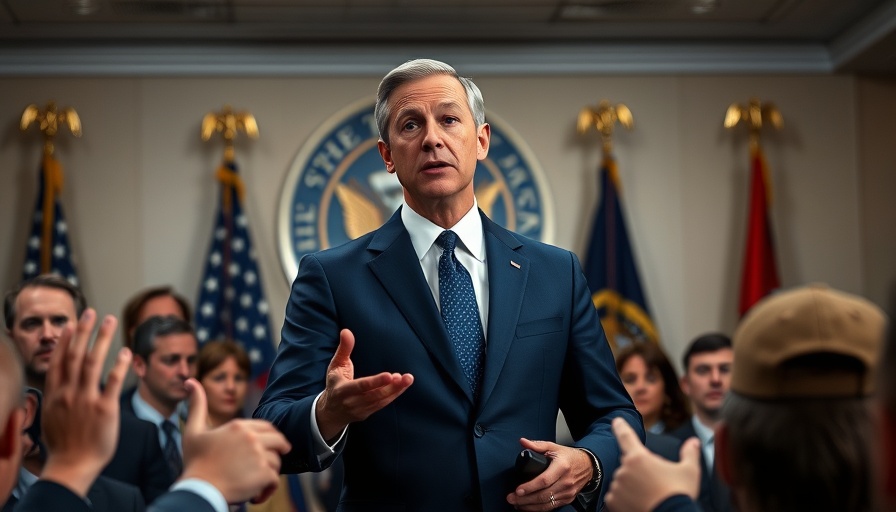
U.S. Strikes on Iranian Nuclear Sites: What We Know
On June 22, 2025, the United States military conducted significant airstrikes targeting three key nuclear facilities in Iran, marking a dramatic escalation in the ongoing tensions in the Middle East. This military action, which saw U.S. forces join Israeli efforts to dismantle Tehran’s nuclear capabilities, has raised urgent questions not only about the immediate impact but also about the future stability of the region.
Understanding the Context: The Historical Lens
The U.S. involvement in the strikes against Iran's nuclear infrastructure isn’t entirely unexpected but reflects a long history of geopolitical hostilities. Relations between the U.S. and Iran have been strained since the Iranian Revolution in 1979. Over the decades, Iran’s nuclear ambitions have fueled fears among its neighbors and the West, leading to calls for intervention from various stakeholders, including Israel, which sees a nuclear-armed Iran as a direct threat.
The recent strikes are viewed through the lens of an escalating conflict that began with Israel's systematic attacks aimed at crippling Iran’s military operations. The U.S.'s direct engagement indicates a departure from its prior reluctance to intervene militarily in the region, suggesting a new strategic approach.
Current Events: A New Phase in Middle Eastern Politics
The bombings have not only ignited debates about the legality of such actions but have also prompted fears of retaliation from Iran. Iranian leadership, including Foreign Minister Abbas Araghchi, has made it clear that they reserve the right to respond militarily. This rhetoric escalates anxieties about a potential wider conflict, raising the stakes for not just the Middle East, but for global politics at large.
In addition to immediate military ramifications, the strikes could lead to significant global economic implications, especially in the oil markets. Iran is a major player in the region, and disruptions to its operations could send shockwaves through global supply chains.
The Technical Aspects: A Bunker-Buster Approach
Reports indicate that U.S. defense officials utilized advanced stealth bombers capable of deploying a 30,000-pound bunker buster bomb, specifically designed for penetrating fortified structures. This specialized weaponry implies a strategic focus on Iran’s heavily fortified facilities, which have previously evaded extensive damage from airstrikes.
The effectiveness of these strikes, particularly concerning the underground nuclear sites like Fordo, remains uncertain. U.N. nuclear chief Rafael Grossi noted that no independent assessments are currently available to determine the extent of the damage, leaving space for speculation and further military posturing from Iran.
Future Implications: Risks and Considerations
The strikes may have successfully inflicted ‘monumental damage’ as claimed by President Donald Trump, but the question remains: What next? The potential for Iranian retaliation looms large, and there are varying opinions on whether further escalation will lead to a broader conflict. Experts warn that a cycle of attack and counterattack could destabilize the already fragile equilibrium in the region.
Moreover, the U.S.’s action raises philosophical questions about the nature of military intervention: Does this move signal a robust commitment to contain a perceived threat, or does it set a dangerous precedent for unilateral military engagement based on national interests?
Community Perspectives: Local and Global Reactions
Locally, Central Florida residents may find themselves affected by developments in Iran, especially given the interconnectedness of global dynamics. Community forums and discussions are likely addressing fears surrounding oil price fluctuations, international relations, and potential refugee crises spurred by renewed conflicts.
Public sentiment around military actions often sways along partisan lines, highlighting the importance of informed discussion and community engagement on national security issues. Understanding the complexities of global politics not only empowers individuals but also cultivates a more informed electorate.
Conclusion: The Need for Ongoing Dialogue
As the dust settles on recent military actions, it is crucial for citizens, especially in community stakeholders, to remain engaged with evolving events. Participating in discussions around U.S.-Iran relations and their implications on local and global scales can help foster a more informed and proactive community. Ensure to stay updated with reliable news sources as the situation develops.
 Add Row
Add Row  Add
Add 






Write A Comment